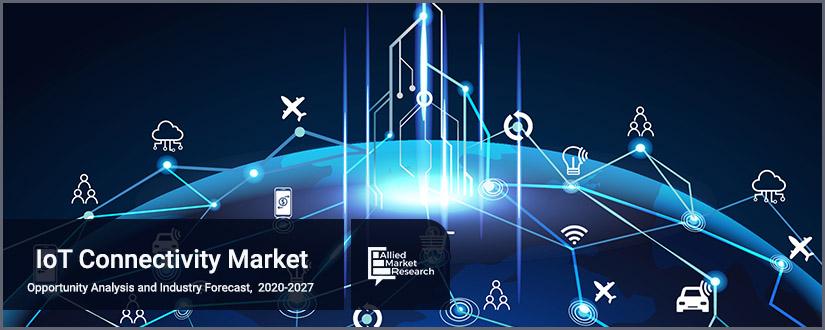IoT Connectivity Market Outlook - 2027
Internet of Things (IoT) is developed by merging number of technologies such as machine learning, real-time analytics, sensors system, embedded system, and others. IoT system is internally correlated with mechanical and digital machines and computing devices which are enabled with unique identification code and can transfer data on network without direct interaction between human and machine. The use of IoT technology is increasing in number of applications such as satellite technique, cellular network, Wi-Fi connectivity, Bluetooth connectivity, near field communication (NFC), radio frequency identification (RFID), low power wide area networking (LPWAN), and others. These services are provided by different service providers. IoT helps in digital development and transformation of new businesses by connecting thousands of IoT devices on existing network and help businesses to stay connected with their customer and gain revenue.
Various factors such as expansion of connected devices and surge in need of secure, reliable & high-speed connectivity drive the growth of the IoT connectivity market globally. Moreover, the rise in need of integrating standalone as well as non-standalone components of IoT ecosystem further fuels the growth of the IoT connectivity market globally. However, complicated design of the IoT gateway with semi-skilled professional in small and medium scale enterprise restraints the growth of the market. Furthermore, integration of blockcha in with IoT and rise in adoption of IoT in telecommunication companies are expected to create more opportunities for the growth of the IoT connectivity market. Also, rise in awareness about the benefits of IoT open source platform over traditional connectivity is expected to create lucrative opportunities during the forecast period.
The IoT connectivity market is segmented on the basis of component, application, enterprise size, industry vertical, and region. By component, it is classified into solution and service. These rvices segment is further bifurcated into professional service & managed service. By application, it is dividedin to building & home automation, smart energy & utility, smart manufacturing, connected health, smart retail, smart transportation, and others. By enterprise size, it is categorized into small & medium size and large size enterprises. By industry vertical, it is classified into BFSI, healthcare, defense and aerospace, IT & telecommunication, retail & e-commerce, manufacturing, education, and others. By region, the market is analyzed across North America, Europe, Asia-Pacific, and LAMEA.
This report includes an in-depth profile of some key market players in the IoT connectivity market. These include Aeris,AT&T Intellectual Property, Cisco System, Huawei Technologies Co., Ltd.,Orange,Sierra Wireless, Telefonaktiebolaget LM Ericsson, Telefónica S.A.,Telits, VerizonandVodafone Idea Limit.
Key Benefits For Stakeholders
The study provides an in-depth analysis of the market along with the current trends and future estimations to elucidate the imminent investment pockets.
Information about key drivers, restraints, and opportunities and their impact analysis on the IoT connectivity market size is provided.
Porter’s five forces analysis illustrates the potency of buyers and suppliers operating in the market.
The quantitative analysis of the market is provided to determine theIoT connectivity market potential.
IoT Connectivity Market Report Highlights
| Aspects | Details |
| By Component |
|
| By Product |
|
| By Organization Size |
|
| By Application Areas |
|
| By Region |
|
| Key Market Players | Telefónica, Ericsson, Cisco Systems, Inc., Sierra Wireless, Orange Business Services, Verizon, Huawei, Hologram, Telit, Moeco |
Loading Table Of Content...



